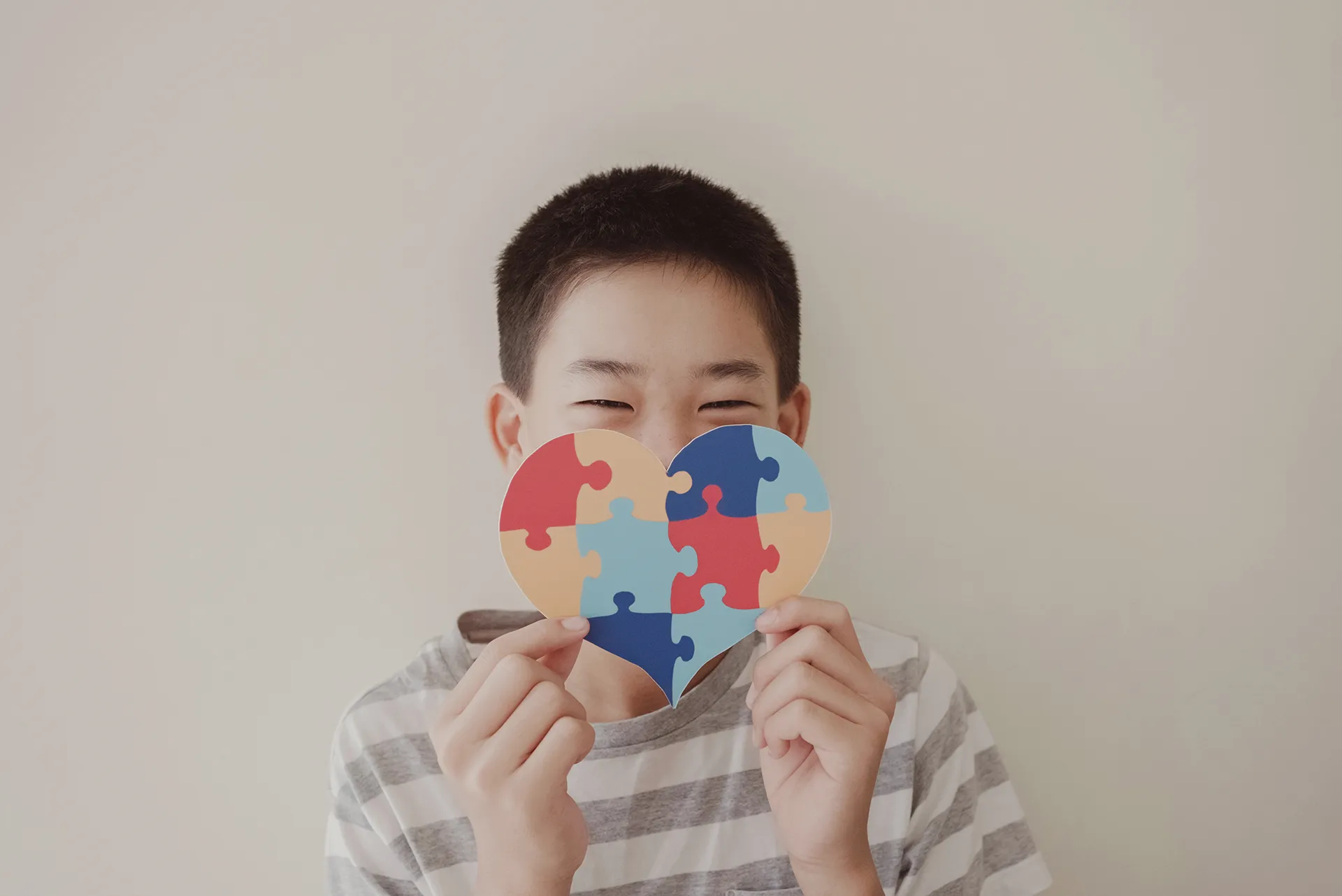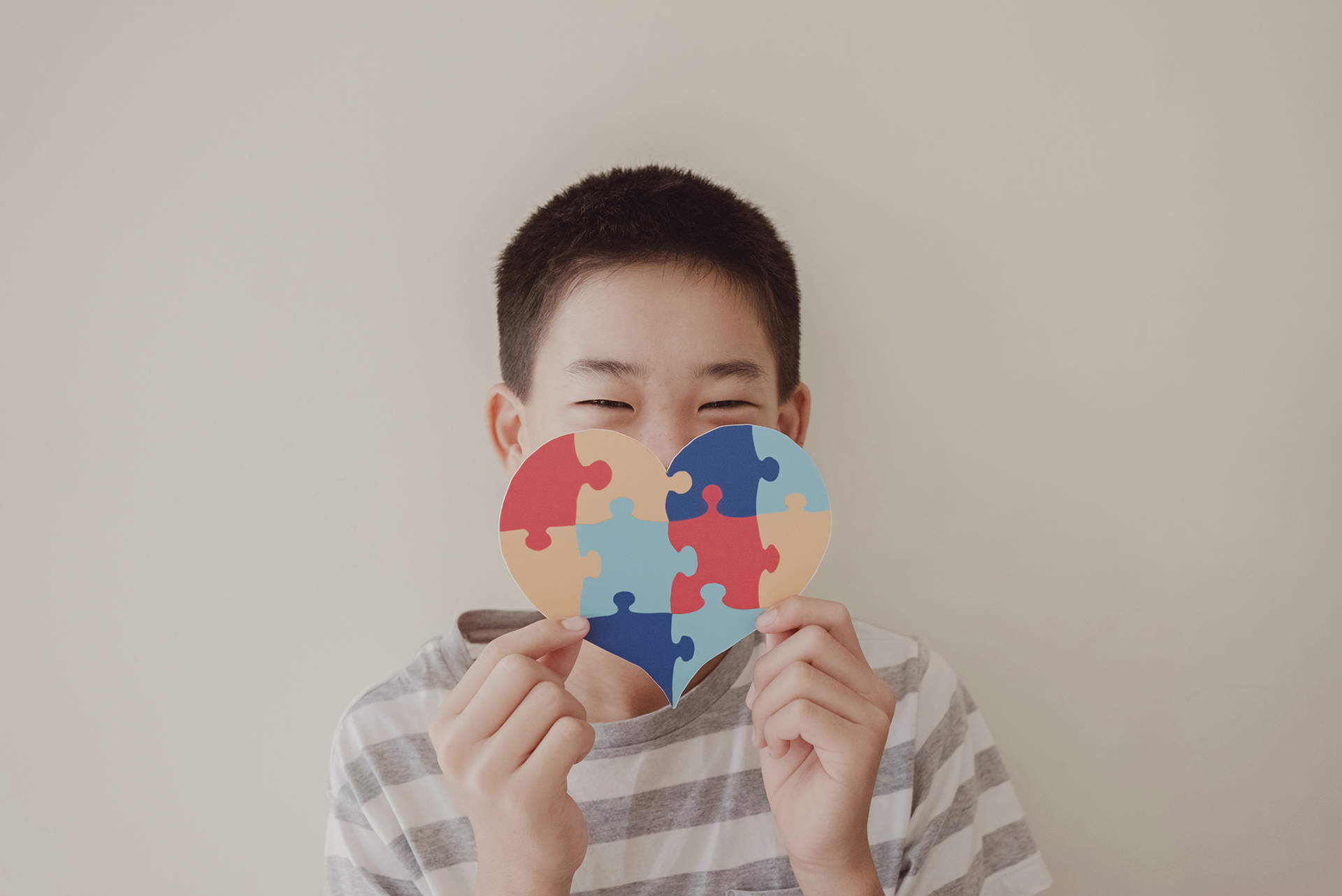General Physician | 11 min read
Autism Spectrum Disorder: Risk Factors, Treatment and Therapies
Medically reviewed by
Table of Content
Key Takeaways
- Variations in the brain cause the developmental disability known as Autism Spectrum Disorder (ASD)
- Some people with ASD have a recognized distinction, such as a genetic disorder
- ASD is thought to have several underlying reasons that interact to alter how people typically grow
World Autistic Pride Day is celebrated on June 18 every year, to raise awareness about autism and applaud the neurodiversity and uniqueness of those who fall on the Autism Spectrum Disorder. Autistic Pride Day was first celebrated in 2005, by an organisation called Aspies for Freedom. One of the heart-warming things about this day is that the celebrations aren’t organised by corporations or charities. Instead, the event is completely managed by those falling on the Autism Spectrum Disorder.
The day also serves as a way to abolish the stigma attached to autism, encourage acceptance and focus on the individuality of those with Autism Spectrum Disorder. On June 18 every year, autistic pride is represented by an autism pride symbol: a rainbow-coloured infinity sign. It symbolises the diversity within the community, their pride, and the infinite possibilities that exist for those who are autistic.
This year, on June 18 Autistic Pride Day, why not educate yourself about the condition and the therapies that exist to help those with autism lead a better quality of life?
What is Autism?
In a nutshell, Autism Spectrum Disorder is a broad term that is used to talk about a number of neurodevelopmental disorders. Those who fall on this spectrum typically have difficulty in communication, social interactions, as well as limited or repetitive behaviours. The word ‘spectrum’ is used as usually the symptoms vary, as does their severity.
Children most commonly show signs of autism by the time they are a year old. That said, symptoms may also show up around the 18–24-month mark. It is at this stage that doctors are able to make a proper diagnosis. Also, it’s important to note that ASD or ASD has various sub-types. These pertain to the presence/absence of an intellectual or language impairment, association with a medical/genetic condition, association with environmental factors, association with other neurodevelopmental, behavioural, mental disorders and occurrence in combination with a condition known as catatonia.
While many promise an autism therapy cure, know that autism isn’t reversible or curable. That said, intensive therapy can help a person diagnosed with autism lead a better quality of life.
Symptoms of Autism
Early childhood is often between the ages of 12 and 24 months when the signs of ASD first clearly emerge. However, signs might possibly show up sooner or later.
One of the initial signs might be a significant delay in social or linguistic development.
DSM-5 divides ASD symptoms into two categories:
- Communication and social interaction issues limited or repetitive behavioural patterns or activities
- To be diagnosed with autism, a person must show signs in both of these categories
Communication and social interaction issues
Many communication issues that ASD might cause appear before age five.
Here is an illustration of a potential timeline for this:
- Problems establishing eye contact from birth
- By nine months, they are not reacting to their name and are not expressing emotions with their faces (like surprise or anger)
- By age one year: They are incapable of playing simple interactive games like peek-a-boo or pat-a-cake
- By a year, avoid (or limit) the use of hand motions like waving.
- By 15 months, they were hiding their interests from others (by showing someone a favourite toy, for example)
- By 18 months: They are not looking or pointing in the same places as others
- By 24 months: They fail to notice when others seem upset or depressed
- By 30 months: They are refraining from "pretend play," such as looking after a doll or playing with miniatures
- Not participating in turn-taking games like duck-duck-goose by the age of 60 months
Children with autism may also find it difficult to express their feelings or understand those of others as early as 36 months.
As they age, they might have speech impediments or trouble speaking. Other autistic kids' rates of language development might differ. For instance, if they find a subject highly intriguing, they may grow a very robust vocabulary for discussing that subject. However, they could have trouble talking to each other about other topics.
When children with autism begin speaking, their voices may have an unusual tone ranging from high-pitched and "sing-songy" to robotic or flat.
They may also display symptoms of hyperlexia, which entails reading material that is inappropriate for their age. Children on the autism spectrum may start learning to read earlier than their neurotypical peers, often as young as age two. However, they are unable to comprehend what they are reading.
Research indicates that roughly 84 per cent of children with hyperlexia are on the autistic spectrum [1], even though hyperlexia does not necessarily go hand in hand with autism.
Children with autism may find it challenging to share their feelings and interests with others or to continue a back-and-forth discussion when they engage with others. In addition, maintaining nonverbal communication skills like eye contact and body language may still be challenging.
Communication issues like these might persist well into adulthood.
Restricted or consistent behavioural patterns or activities
Autism involves symptoms relating to body movements and behaviours and the communication and social difficulties discussed above.
These may consist of the following:
- They do repetitive motions, such as rocking, swinging their arms, twirling, or racing back and forth. They line up toys in tight order and become agitated when that order is interrupted
- Devotion to rigorous routines, such as those surrounding bedtime or getting ready for school, and repeatedly repeating words or phrases that they hear others use
- Becoming irate at tiny adjustments
- Concentrating attentively on specific details of items, such as the doll's hair or the wheel of a toy vehicle, or having unexpected reactions to sensory input, such as noises, scents, and tastes
- Obsessive pursuits
- Remarkable qualities, such as musical skill or memory
Additional traits
Additional signs and symptoms that some autistic people may experience include:
- Delayed linguistic, cognitive, or motor abilities
- Seizures, gastrointestinal problems, such as diarrhoea or constipation, increased stress or concern, and unusually high emotions of dread (either higher or lower than expected)
- Impulsive, hyperactive, or inattentive actions
- Unexpected emotional responses
- Atypical tastes or eating habits
- Odd sleeping habits
Types of Autism
The American Psychiatric Association (APA) is the publisher of the fifth edition of the Diagnostic and Statistical Manual of Mental Disorders (DSM-5) (APA). Clinicians use it to identify a number of psychiatric diseases.
The DSM's fifth and most recent version was published in 2013. There are now five separate ASD specifiers, or subtypes, recognized by the DSM-5. They are as follows:
- ASD accompanied by another neurodevelopmental, mental, or behavioural disease
- ASD with catatonia
- ASD with or without intellectual impairment
- ASD with or without linguistic impairment and
- ASD with or without any known medical, genetic, or environmental conditions
One or more subtype of ASD may be identified in a person during diagnosis.
Before DSM-5, autistic people were often diagnosed with the following:
- Diagnosis of autism
- Asperger's disorder
- Unspecified pervasive developmental disorder (PDD-nos)
- Disorder of disintegration in children
A person who obtained one of these prior diagnoses has not lost their diagnosis and will not require reevaluation; it is crucial to highlight.
The DSM-5 defines ASD as a comprehensive diagnosis, including Asperger's syndrome. Study on Asperger's syndrome and the other, more traditional categories of autism.
What Causes Autism?
ASD's precise origin is uncertain. There is no one reason, according to the most recent study.
Among the hypothesized ASD risk factors are:
- Possessing certain genetic variations or having an autistic member of one's immediate family
- Hereditary diseases such as fragile x syndrome
- Having elderly parents
- Metabolic abnormalities caused by low birth weight
- Exposure to environmental contaminants and heavy metals
- A mother with a history of viral infections
- Exposure of the fetus to the drugs thalidomide or valproic acid (Thalomid)
The National Institute of Neurological Disorders and Stroke (NINDS) claims that a person's propensity for ASD may be influenced by both heredity and environment.
However, it has been determined by several recent and antiquated sources that immunizations do not cause ASD.
A contentious research from 1998 suggested a connection between autism and the MMR vaccination (measles, mumps, and rubella). But later, in 2010, the paper was withdrawn after being refuted by more research [2].

Risk Factors of Autism Spectrum Disorder
So far, doctors haven’t found a single cause for ASD. Given that the symptoms and their severity vary, it’s more likely that a range of factors contribute to ASD.
Genetics seem to be a key factor. For some children, ASD is a product of a genetic disorder such as fragile X syndrome or Rett syndrome. Similarly, genetic mutations (inherent or those that develop spontaneously) also increase the risk of a child suffering from ASD.
Apart from this, the following are said to be risk factors of ASD:
- Having a sibling diagnosed with autism
- Being born to parents who are older than most
- Having a low birth weight and/or metabolic disorders
- Being exposed to toxins and heavy metals
- Being born pre-term, that is before 26 weeks of gestation
While it’s still to be determined whether air pollutants and factors such as viral infections and complications during pregnancy can cause ASD, it is a myth that vaccinating babies can result in ASD. It has been proven that vaccines are safe and don’t cause autism.
Tests to Diagnose Autism
A diagnosis of ASD entails:
- Several examinations
- Genetic testing
- Assessments
Several examinations
All kids should get an ASD screening, according to the American Academy of Pediatrics (AAP), at ages 18 and 24 months.
The earlier ASD is discovered in youngsters, the better. Early diagnosis and assistance may be beneficial for them.
Many pediatric clinics employ the Modified Checklist for Autism in Toddlers (M-CHAT) as a standard screening tool. Parents answer the 23 questions on the poll. Following that, pediatricians can use the replies to identify kids who could be more likely to experience ASD.
The distinction between screening and diagnosis must be made. Children that test positive for ASD may not actually have the disorder. Additionally, not all autistic children are always detected during testing.
Additional evaluations and testing
A variety of tests for autism may be suggested by your child's doctor, including:
- Behavioral assessment of genetic illness testing
- Occupational therapy screening exams include visual and auditory examinations to rule out any vision or hearing problems unrelated to ASD and developmental questionnaires like the autism diagnostic observation schedule, second edition (ados-2)
Choosing the diagnosis (Assessments)
The diagnosis is often made by a group of experts. This group might include the following:
- Psychologists for kids
- Occupation-focused therapists
- Language and speech therapists
Autism Prevention Tips
Although doctors are unsure of the exact etiology of autism, they do think genes have a major impact on whether a kid is born with it.
Occasionally, according to medical professionals, if a woman was exposed to specific chemicals while she was pregnant, the kid may be born with birth abnormalities. However, during pregnancy, doctors are unable to determine if your unborn child will have autism.
Although it is impossible to avoid having a kid with autism, making the following lifestyle modifications will improve your chances of having a healthy child:
Live healthily. Get frequent checkups, consume well-balanced meals, and exercise. In addition, make sure you obtain top-notch prenatal care and take all the recommended vitamins and supplements.
Here are some suggestions to prevent autism:
- Avoid using drugs while pregnant. Before you take any drug, consult your doctor. Particularly in the case of some anti-seizure medications
- Skip the booze. While you are expecting, avoid drinking any alcoholic beverages at all costs, including that glass of wine.
- Seek medical attention for any existing health issues. Follow your doctor's recommendations for managing celiac disease and PKU if you have been diagnosed with either condition.
- Obtain a vaccine. Before becoming pregnant, ensure you have the German measles (rubella) vaccination. It can avert autism brought on by rubella.
Autism Treatments and Therapists
Autism treatment therapy or autism therapies are extremely effective. They not only help reduce symptoms, but also greatly improve a person’s ability to communicate and take care of themselves.
1. Occupational Therapy
When it comes to autism treatment, occupational therapy is a must. It helps children with learning everyday tasks, be it dressing themselves, eating by themselves or getting ready for school. This therapy is tailored to the things or tasks that a particular child struggles with.
2. Animal Therapy
If you’re looking for an unconventional autism treatment, animal therapy may be it. It helps with teaching children social skills, empathy and communication through interactions with animals such as dogs, horses and birds under the supervision of an experienced therapist.
3. Physical Therapy
For children diagnosed with autism, physical therapy treatment is especially effective. It helps build muscle strength and control, balance and motor skills. Through physical therapy, a child with autism can play with other children and interact much more easily.
4. Stem Cell Therapy
When it comes to unconventional autism treatment, stem cell therapy can’t be ignored. Certain studies suggest that when stem cells are given intravenously, they can improve neural connectivity, thus benefitting children with ASD.
5. Speech Therapy
Are you searching for treatment in speech therapy? If so, you’re on track. Speech therapy is one of the most essential therapies as it helps children express themselves and communicate with others. Apart from verbal instruction, it also focuses on non-verbal cues such as eye contact and usage of gestures.
Apart from knowing about the therapies that help children with ASD, it’s important that you find the right therapist. This will allow you to measure your child’s progress regularly and learn how to best address their needs at every stage of development. Additionally, partnering with a specialist will allow you to make sense of terms you see online, be it autism treatment India G therapy or autism treatment dolphin therapy.
Find a therapist who understands your child’s needs on Bajaj Finserv Health. View a list of top specialists in your city and book an online or in-person appointment. Avail Bajaj Finserv Health card and get 10 free online consultations with top specialists. What’s more, you can get discounts and special offers from selected healthcare providers. Book an appointment and get started right away!
References
- https://www.jpeds.com/article/S0022-3476(13)00144-3/pdf?ext=.pdf
- https://pubmed.ncbi.nlm.nih.gov/16754843/
Disclaimer
Please note that this article is solely meant for informational purposes and Bajaj Finserv Health Limited (“BFHL”) does not shoulder any responsibility of the views/advice/information expressed/given by the writer/reviewer/originator. This article should not be considered as a substitute for any medical advice, diagnosis or treatment. Always consult with your trusted physician/qualified healthcare professional to evaluate your medical condition. The above article has been reviewed by a qualified doctor and BFHL is not responsible for any damages for any information or services provided by any third party.



